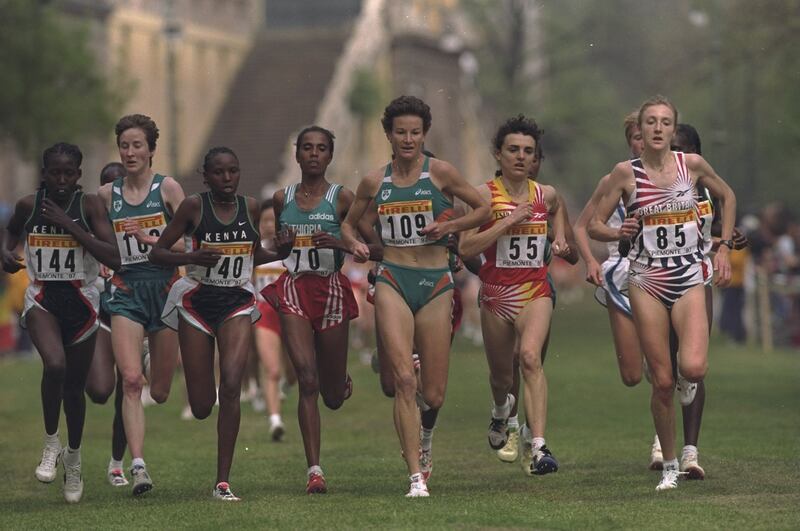For most of us, starting a new year is just a greater version of starting a new week, making promises to better ourselves and to find new challenges. For any athlete of international standard it’s something altogether greater.
There will always be a plan to chase goals and targets for the new season, but for those with the highest aspirations, all roads lead to the World Championships, set for Budapest in late August. But that’s a way off yet.
For me, a new season would where possible include a plan to run some cross-country, leading up to the grand finale of the World Cross-Country Championships. There was a time not so long ago when all of the world’s best distance athletes competed in what was known as the greatest distance race of all, and one of the hardest to win. It used to be a starting line-up like no other, a race where everyone wanted to lay down a marker ahead of the summer track season.
Aarhus in Denmark last hosted the event in 2019, before Covid-19 got in the way: now running as a biennial event anyway, and postponed from 2021, the latest edition is set for Bathurst in Australia on February 18th.
Armagh v Galway: Throw-in time, TV details, ticket and team news for All-Ireland football final
Darragh Ó Sé on the Galway football team: The 15 men bidding for All-Ireland glory
Michael Murphy on Armagh: The 15 Orchard men bidding for historic All-Ireland football glory
Olympics opening ceremony: Everything you need to know including times, where to watch and route
Already the local organisers are working extra-hard to attract the very best Australian athletes, and get as many as possible onto the start line believing they are medal contenders for the first major world athletics event of the year.
Even when they split the event for a few years, to include even more middle-distance athletes over the one weekend in the short and long course races, it was held in high esteem, a sense that top runners wouldn’t dare miss it.
It’s the perfect groundwork for athletes in the winter, to build an endurance base without the intensity of weekly track sessions, racing over undulating terrain, focusing more on the endurance build-up, gaining strength over hills and a variety of challenging courses to periodically test the fitness.
The attractiveness of an event in Australia is being cautiously weighed up by many athletes, as the travel is always a factor when it comes to committing to racing Down Under
You can always get fit in a general sense, get a measure of where you are at and then be more track-specific as the summer season approaches. The problem now is people can be too specific, too soon; and, like living in the tropics, there is not much seasonal change throughout the year. So it all becomes more and more repetitive, and athletes operate at a constant level throughout the year, not experiencing the peaks and troughs of a more traditional seasonal approach.
[ How Europe became the cross-country capital of the worldOpens in new window ]
[ Women’s team lead record medal haul for Ireland at European Cross-CountrysOpens in new window ]
In recent years the World Cross-Country hasn’t been as attractive as it used to be, though Bathurst is trying hard to reverse that, even given the distance away for many. Cross-country also has a little bit of an unknown factor, with the surface and undulations different each time. It means athletes must step outside the comfort zone often seen on the track, when specific pacing allows an athlete to spread their effort more evenly and prepare with greater specificity.
There is a toughness about cross-country too that can set an athlete up for the year, and an engagement with the fans we don’t always consider until on the ground with them, as they run around trying to get the best vantage point and cheer on their teams.

The other big attraction is that team aspect, even more so now with another opportunity in the mixed relay event – still a new event, so there are chances there for the smart thinkers and prepared runners.
There is also the attraction of available ranking points from the World Cross Country, being a top category event, which can help towards the 10,000m in Budapest. Still, the reasons for running are less romantic than before, when every top runner wanted to be a part of one of the traditional greatest foot races.
The attractiveness of an event in Australia is being cautiously weighed up by many athletes, as the travel is always a factor when it comes to committing to racing Down Under. Still, I would see it as the perfect place to get a bit of warm weather training, line up against the best in the world, and also have some early season track race options available before and after in the Australian summer season.
The Australians are committed, naturally; the Americans always send a full team as well as Great Britain and Spain. The best of Africa never shy away either, Letesenbet Gidey from Ethiopia already making her intentions clear by winning the Ethiopian trial, as well as Joshua Cheptegei of Uganda, both world record holders over 5,000m and 10,000m.
Indoor running is nice and comfortable but it’s just a mini, lower-grade version of outdoors, especially in a year without a World Indoors
The experience of such an event would also open the eyes of any aspiring junior athletes over 8km; Jakob Ingebrigtsen competed in Aarhus, finishing in 12th. And look at where he is now. The senior races are over 10km, even more specific to the true distance runners, while there is that mixed relay option for the middle-distance athletes.
It’s always been a thing for the best distance athletes down through the years to test themselves across all surfaces – cross-country, indoor and outdoor track and road. There is nothing like a bit of variety to set a challenge and step outside the comfort zone, and there is no doubting the World Cross-Country is always the biggest test; you know once you get through this then everything else is that little bit easier.
After one of the most successful European Cross-Country Championships ever from an Irish standpoint – five medals from three different races – it’s disappointing that there is unlikely to be any great representation from Ireland in Bathurst, with two provisional entries, one man and one woman (to be confirmed), as of now.
It’s a pity Athletics Ireland don’t see this as a springboard to take on the world, for more Irish athletes to see where they truly stand on the global stage. Instead, the World Cross-Country appears to have gone silent in Ireland, where once it was well represented and delivered results.
It is something that you have to believe in, set your heart on. Indoor running is nice and comfortable but it’s just a mini, lower-grade version of outdoors, especially in a year without a World Indoors.
It’s sad to think that distance running in Ireland might be shying away from stepping up on the world stage, that what was once a gateway for athletes to make a world team is being shut down, not encouraged. Because the biggest test you will get is at the World Cross-Country, finding a way to get comfortable being uncomfortable, making a mark that you have to improve on next time if you really want to challenge greatness.






